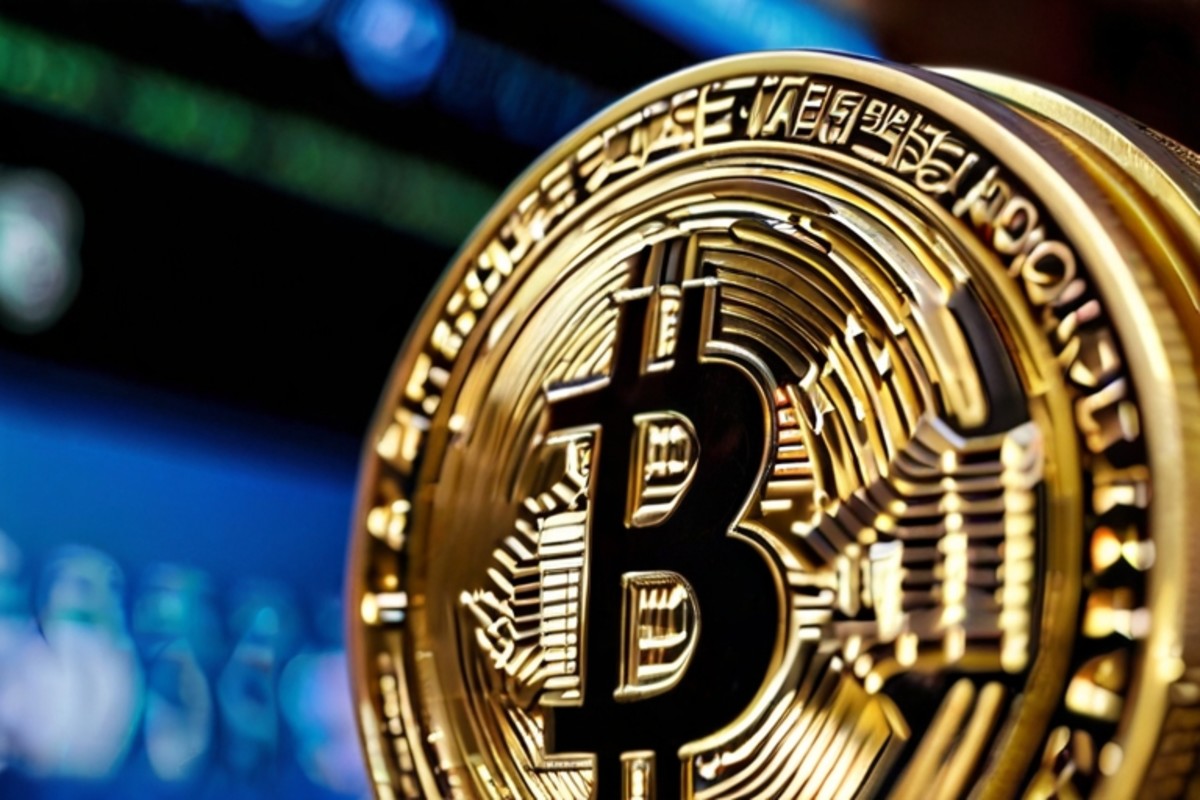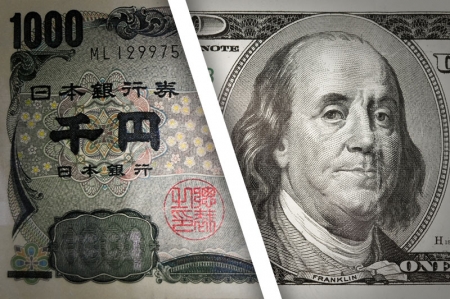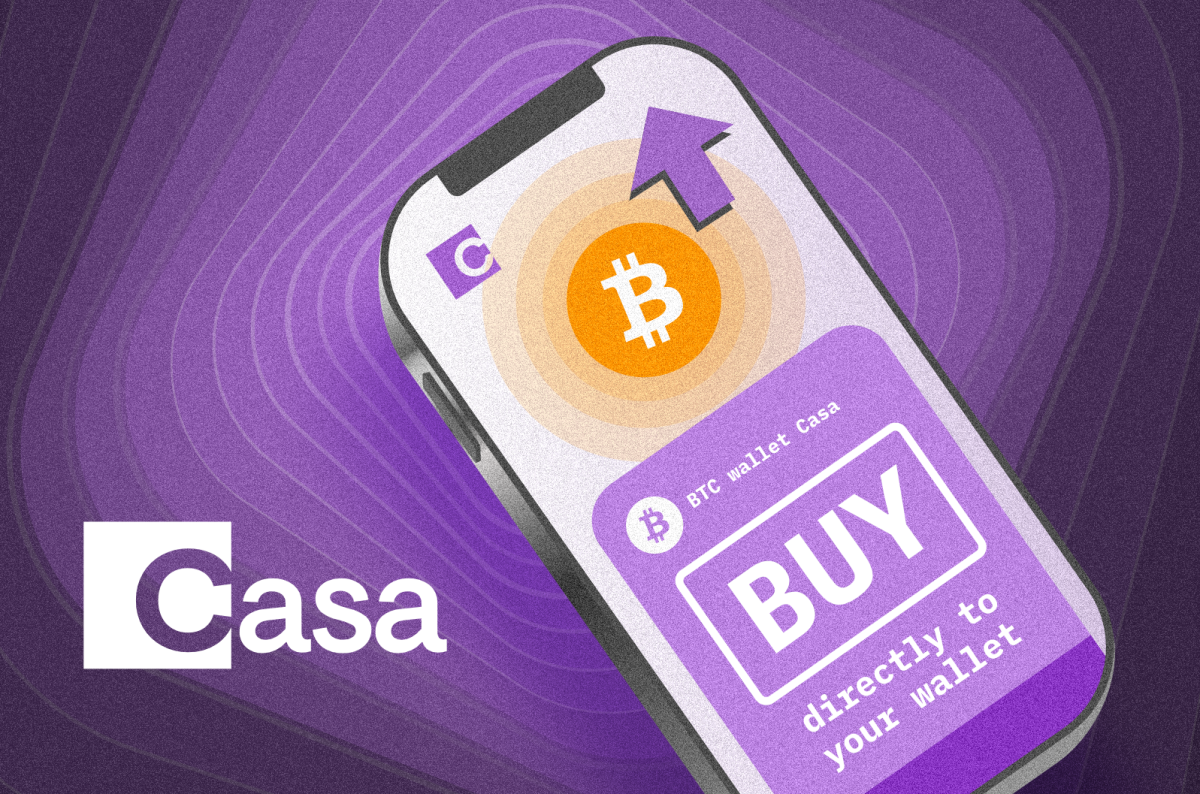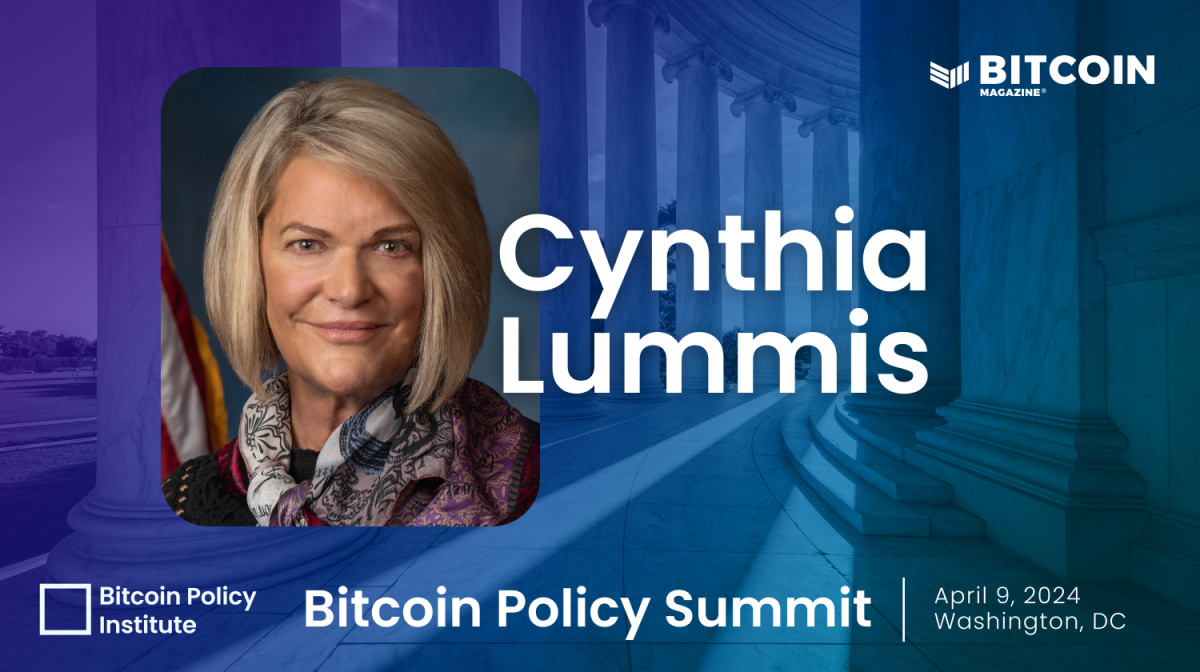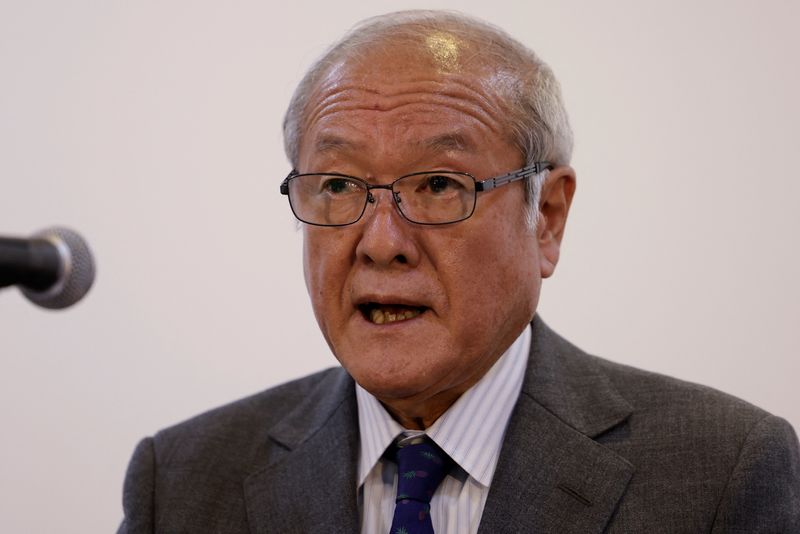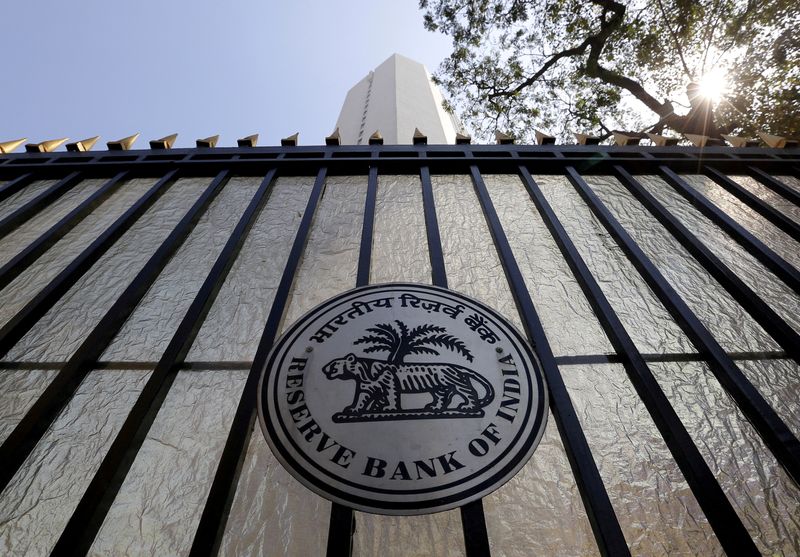Month: March 2024
Bitcoin ETF Demand Surges, Outpacing Supply by 600%
The demand for US spot Bitcoin ETFs surged significantly on Tuesday, outpacing the new supply created daily by miners by a remarkable 614%, according to Gayatri Choudry, Quantitative Research Analyst at Bitwise Asset Management.
Demand from US BTC ETFs exceeds new BTC supply by 7x pic.twitter.com/OCU5D19rpf
— Gayatri (@GayatriPC_) March 27, 2024
The surge in demand for Bitcoin ETFs reflects growing interest among institutional and retail investors in gaining exposure to the digital asset, without having to manage the BTC themselves. ETFs offer a convenient and regulated way for investors to participate in the potential upside of Bitcoin’s price movements while mitigating some of the risks associated with direct ownership and custody.
The Bitcoin halving, scheduled to occur in less than a month, will reduce the block reward from 6.25 BTC to 3.125 BTC. This event is significant because it reduces the rate at which new bitcoin is generated by half, making BTC more scarce over time. As demand for Bitcoin ETFs continues to rise and outpace new supply, the available bitcoin on the market is becoming drastically scarce.
The combination of rising demand for Bitcoin ETFs and the impending Bitcoin halving have been the catalysts for the surge in Bitcoin’s price this year, with BTC now up over 55% year-to-date at the time of writing. Since BlackRock initially filed its spot Bitcoin ETF application with the US Securities and Exchange Commission, BTC has risen over 173%.
Market participants remain eager to see how Bitcoin will react to the upcoming halving, as this is the first market cycle in Bitcoin’s history where its price reached a new all time high before the halving. Historically, it would take a few months for the ‘supply shock’ to jump start a rise in Bitcoin’s price following a halving. But now, with demand from spot Bitcoin ETFs growing with no end in sight, Bitcoin has already experienced a big supply shock, and the new supply of BTC per day is about to get cut in half.
On the Brink of a Dramatic Change: The Digitalization of Money
“What underpins a world order is always the financial system.
We are on the brink of a dramatic change where we are about to, and I’ll say this boldly, abandon the traditional system of money and accounting and introduce a new one. And the new one is what we call blockchain.
It means digital. It means having an almost perfect record of every single transaction that happens in the economy, which will give us far greater clarity over what’s going on. It also raises huge dangers in terms of the balance of power between states and citizens. In my opinion, we’re going to need a digital constitution of human rights if we’re going to have digital money.
Most people think that digital money is crypto and private, but what I see are superpowers introducing digital currency. The Chinese were the first. The US is on the brink of moving in the same direction. The Europeans have committed to that as well.”
This revolutionary speech about a new financial system, was delivered at the World Government Summit in March 2022 in Dubai, by Philippa “Pippa” Malmgren, a member of the Council on Foreign Relations (CFR) and Chatham House; her father, Harald Malmgren served as a senior advisor to US Presidents Kennedy, Nixon, Ford and others. She’s a technology entrepreneur and economist, who served as Special Assistant to President George W. Bush, for Economic Policy on the National Economic Council and is a former member of the President’s Working Group on Financial Markets and Corporate Governance.
Her words about the transition to a new world order that requires a new financial structure correspond well with the words of French President Emmanuel Macron in June 2023 at the Global Finance Summit in Paris: “The world needs a public financial shock to fight global warming, and the current system is not suitable for dealing with the world’s challenges.” The president of Brazil, Lula da Silva, also called for “a clean slate” and said the Bretton Woods organizations (World Bank, International Monetary Fund) do not serve their goals nor respond to society’s needs.
The Summit for a New Global Financing Pact. Photo: Ricardo Stuckert/PR
“The New Bretton Woods Moment”
“A new international monetary system is taking shape, some call it the new Bretton Woods moment that needs to be seized to create a new global financial governance,” says the investigative journalist Whitney Webb in a recent sitdown interview, where she mention that according to Mark Carney, former governor of the Bank of England & Bank of Canada and the UN Special Envoy for Climate Action and Finance, the three pillars of the new multi-polar world are Digital IDs, CBDCs and ESG, through a global carbon market. All world governments are pushing this agenda, that in order for it to succeed, all monetary systems and supporting systems must become digital and rely on digital data.
A good example of this was revealed at an event of the Central Bank of Israel with the Bank for International Settlements (BIS) – which I attended – in September 2023 in Tel Aviv, where the “Genesis Project” was presented. As part of this project, “green” bonds are issued, based on carbon quotas in the CBDC infrastructure. This is how the climate agenda is linked to financial markets.
“Debt Serfdom”
“Stablecoins could be the way in which the US is further globalizing the dollar, spreading its adoption directly to the world’s general public in order to continue increasing its debt and encourage uptake and usage of the dollar”, says Mark Goodwin, Editor in Chief of Bitcoin Magazine, in this interview with Whitney Webb. He suggests that the politician’s outcry of de-dollarization and the weakening of the dollar are a distraction from perpetuating the dollar as the world’s reserve currency.
“While CBDCs are what people are becoming fearful and aware of, it may just be the red herring, and the real strategy of the US dollar’s survival is highly regulated stablecoins (such as Tether), which can easily be programmable, even more than CBDCs, as well as seized, regulated and controlled indirectly by governments. 100 billion dollars in treasuries were already purchased by Tether, its subsidiaries and owners. Tether is positioned alongside the top 20 nation states buying debt from the US, with around one tenth of China or Japan that have a trillion dollars debt to the US”.
Whitney Webb & Mark Goodwin. Source: https://www.youtube.com/watch?v=yC9dJYqDZ9c
This theory, together with the words of Mark Carney, Pippa Malmgren, Emmanuel Macron & Lula Da Silva, join the calls of global leaders and heads of states, pointing to the replacement of the monetary and financial world order, to introduce a new monetary system. Many experts say that we are reaching the end of the current fiat monetary system experiment, which is destined to collapse. Since world leaders are aware of this, they prefer to engineer a controlled demolition, to maintain control and steer the course, and enter the new era with power firmly within their grasp.
Central Bank Digital Currency System (CBDC)
Central Bank Digital Currencies (CBDC), tie the financial freedom of citizens to the government and the banking establishment. The central bank issues its centralized digital currencies, and essentially creates a new monetary system, “fiat on steroids”, a system that takes everything that is bad in the fiat system, and adds more of it; surveillance, control, censorship, and enforcement capabilities. A modern prison? Indeed, the CBDC is the ultimate prototype of a prison without physical chains. By connecting CBDCs to digital identity cards, and to government systems such as universal basic income, social credits and more, we get the ultimate control apparatus. This apparatus will dictate to citizens what they’re allowed to purchase, what the permitted quotas are while limiting consumption according to rules and use cases, at programmed times, places and cadences. The system is able to determine the use of a geographic radius (geo-fencing), and to determine expiration dates on the money. Each remote controlled digital wallet can also be switched on and off by its operators. More than 130 countries are in the initial stages of piloting CBDC systems, of which 36 countries are in advanced pilots, and 3 countries have already launched systems (Nigeria, Jamaica and the Bahamas).
Will Ripple (XRP) Be The Chosen Platform for CBDC?
Ripple, a digital payment network and transaction protocol that owns the cryptocurrency XRP, is considered one of the most popular cryptocurrencies, and is strategically positioning itself at the heart of government financial innovation, aiming to be the cornerstone of future CBDCs.
The company is in talks with about twenty governments around the world to develop their CBDCs using Ripple’s technology. In May 2023, Ripple launched a dedicated CBDC platform to assist central banks, governments and financial institutions around the world in issuing CBDCs and stablecoins. To date, Ripple has partnered with six governments for CBDC pilot projects: Georgia, Colombia, Montenegro, Hong Kong, Bhutan and the Republic of Palau.
The National Bank of Georgia, for example, has chosen Ripple as its technology partner for its CBDC pilot last year, citing Ripple’s technical expertise and team capabilities. Its interest in CBDCs is in leveraging modern technologies, such as the programmability aspect of CBDCs, aiming to create a platform with smart contract and programmable token capabilities to stimulate innovation in the financial sector.
In the case of Bhutan, Ripple’s technology was chosen in 2021 for the country’s CBDC project to enable advanced cross-border payments, and assist in “financial inclusion” – in line with Bhutan’s mission to increase financial inclusion in Bhutan to 85% by 2023.
In 2022, Ripple reached the final stage of the G20 Techsprint CBDC Hackathon, hosted by Indonesia and the Bank of International Settlements (BIS), and in August 2023, the Republic of Palau launched a USD-backed digital currency, developed by Ripple.
Promoting its platform as an infrastructure for a CBDC, Ripple advocates for government regulation of cryptocurrencies, and tries to position itself as the preferred solution for CBDC projects. Its claim to fame of being the ideal CBDC partner for governments is the combination of speed, efficiency, a sustainable and “green” blockchain network that uses little energy (compared to the Bitcoin network), and interoperability – the ability to communicate and work with CBDC solutions in other countries on the Ripple infrastructure. The company warns that there is a risk for CBDC adoption by the public, caused mainly by a lack of market education, and it encourages the programming and expiration dates capabilities, which are perceived by most of the public as particularly Orwellian features of CBDCs.
Ripple encourages the abolition of cash (and a move to a cashless society), and unsurprisingly, it promotes the climate agenda; The company’s website presents its commitment to a clean, prosperous and secure low-carbon future, with a plan to reach carbon net-zero by 2030.
Apparently, in line with Ripple’s expansion strategy vis-a-vis governments, the company makes sure to recruit employees who came from central and commercial banks. One of the company’s top executives is Andrew Whitworth, policy director at Ripple, who previously worked at the Bank of England. At the same time as his role in Ripple, Whitworth also serves as a Director of the “Digital Pound Foundation”, an organization that has declared itself the authority on the Digital Pound; it advises and influences the government’s decisions regarding CBDC projects and deployments. Clearly an inside connection such as this might give Ripple an advantage in shaping digital currency policies to fit their platform and solutions. Does this hint a conflict of interests, or at least an unfair play?
Another avenue through which institutional influence and implicit control over Ripple could manifest is via a legal battle with the SEC (U.S. Securities and Exchange Commission) concerning the XRP cryptocurrency. Engaging in such legal disputes inevitably positions Ripple in a scenario where maintaining a positive relationship with institutions becomes crucial. Consequently, it’s no surprise that Ripple prioritizes governments, central banks, and financial institutions as its primary target audience in its market strategy.
Photo: Lord XRP Twitter account
Interesting Developments in CBDC
China spent a couple of years rolling out relatively failed CBDC projects without widespread adoption, while injecting 30 million yuan as free money to encourage user adoption. Transactions using the digital yuan hit 1.8 trillion yuan (US$249 billion) in June 2023.
Recently, significant progress has been made: the two main payment services and applications in China – WeChat and Alipay – which have a traffic of about 3-4 trillion dollars per year, integrated the Chinese CBDC service into their applications. The central bank regulator made it clear that digital yuan isn’t meant to compete with the two payments giants. Rather, it’s supposed to play a complementary role.
Elon Musk, who owns, among other things, the Twitter/X platform, has stated that he wants to make the platform an “everything app” like the Chinese WeChat, including payment management. Will X also follow the Chinese route and integrate the CBDC solution into it, or will it try to become a CBDC infrastructure itself with the help of Musk’s favorite cryptocurrency, the Dogecoin?
The CBDC pilot in Nigeria didn’t exactly take off either, after the citizens took to the streets to protest the abolition of cash in the country, and resented the introduction of an unneeded digital solution, while demanding the return of cash. After a long and painful protest, the cash was returned alongside the new digital currency, which was not canceled and became part of reality. Furthermore, a new stablecoin is in preparation in Sandbox mode in Nigeria. The cNGN is a Naira stablecoin which some claim has more potential than the e-Naira to be widely adopted. “The stablecoin will be more broadly interoperable than the CBDC, which is only available in the central bank’s wallet. At launch, the central bank’s wallet usability was weak, although it is now quite good”, said Bolu Abiodun, a reporter at Techpoint Africa.
The UK saw a strong public backlash to Prime Minister Rishi Sunak last year, with more than 50,000 responses sent to the Bank of England following a public hearing on the Digital Pound, aka the UK’s national CBDC.
Germany – Awareness of “Excessive Surveillance”
In Germany, the technical guidelines document for a digital currency of a central bank was published in January 2024. Below are several quotes from the document, reflecting the tyrannical nature of the new currency, and the awareness of the central bank for trust issues it can create:
Programmability is the institution’s authority to dedicate your money for certain uses, and to prohibit the use of your wallet when it is “outside the permitted scope”.
“The central bank can revoke CBDC notes, e. g. as an instrument of monetary control. Revocation of CBDC notes is performed by an authorized entity, the revocation authority, controlled and operated by the central bank.” This sounds like a technique to confiscate and apply a shelf life to money.
“Payments permitted under certain restrictions.. if the central bank sees fit to impose them” – the document lists restrictions that can be applied to wallets, depending on the amount of personal information that will be provided. For example, the amount of money in the wallet, the number of payments per day, the amount of money per transaction or per day.
The good news: The German central bank is aware of the possibility of public opposition to a surveillance system: “Many of these design choices are general decisions on the trade-off between excessive surveillance and legitimate monitoring functions for AML and KYC purposes in conjunction with measures for mitigating fraud and misconduct. These decisions are extremely sensitive in nature and can strongly influence the level of trust that users place into the CBDC”.
Israel – The Digital Shekel Will Be Distributed Through Commercial Banks
Israel takes an extensive and active part in various CBDC pilots, such as the Sela project, Eden, Icebreaker and more, which I have reported on extensively in the past. The Deputy Governor of the Bank of Israel announced that in December 2024 a technical design document for the Digital Shekel will be published, and its implementation will then begin in partnership with the private sector.
The Bank of Israel’s latest document from last week covers the proposed architecture of the Digital Shekel. Here are some interesting points from the document:
The distribution of the Digital Shekel will be two-tiered: instead of direct contact between consumers and the central bank for funding and defunding, an indirect method similar to the distribution of cash today will be used. The banks will purchase digital shekels from the central bank in large quantities and transfer them to customers upon wallet charging.The system will be able to apply and enforce limits, for example limits on the balance that users are allowed to hold in the Digital Shekel.The system will support the possibility of applying interest on the Digital Shekel.Users will be able to access the Digital Shekel through several payment providers, including credit cards, Google/Apple Pay, wearables, payment apps and more.Unlike most retail CBDC solutions, Israel’s model allows users to open a wallet with a payment service provider (PSP) and connect to multiple third-party banks to fund and defund balances.
Another interesting development in Israel is the announcement of a plan to launch a new stablecoin pegged to the shekel, called BILS, by the exchange platform, Bits Of Gold. Crypto Jungle website reports that the Israeli Capital Market Authority approved the pilot, according to the draft principles published by the Central Bank of Israel. Interesting to note that the company providing the infrastructure for the issuance and custody of the currency is the Israeli technology giant “FireBlocks”, which took part in the “Eden” pilot project of the Tel Aviv Stock Exchange for the issuance of digital bonds, built to adapt in the future to a potential CBDC infrastructure.
No Internet? Don’t Worry, Governments Will Take Care Of Connectivity Anyway
A number of CBDC pilots, like in India, the European Union and more, focus on the adoption of the system by everyone, even amongst people without internet access. The washed-up name “financial inclusion” implies that the system will not skip anyone, not even citizens without Internet connectivity in remote areas, or without reception. In India for example, there are 683 million people living without an internet connection and largely outside the control of the state. The Reserve Bank of India (RBI) plans to bring these remote areas into a new surveillance network through various technological means. A successful launch of CBDC in India also corresponds with the government’s overarching goal of reducing cash usage and improving financial monitoring.
Thailand – Free Money for the Masses
In September 2023, the Thai government announced that any Thai citizen over the age of 16 who chooses to participate in the CBDC pilot, will receive free CBDC worth $280 (10,000 baht) – quite a lot of money in Thai terms. This digital money will be loaded into the digital wallet application and will be available for use within 6 months, and within a radius of 4 km from the residence of the registered citizens. The pilot targets low-income citizens as a first stage, and later expands to entrepreneurs and small business operators – provided they are registered in the tax system. In Thailand many citizens are not registered in the government systems and not everyone has a bank account. It seems that air-dropping “free money” is another tactic to lure citizens into government systems, with the bait of “free” controlled government money. But is there such a thing as “free lunch”?
The European Union – a Positive Marketing Campaign in High Gear
The European Union launched a marketing campaign to promote the digital euro about six months ago, to start educating the European public about a reality where that they will be obliged to use a supervised digital euro, led by Christine Lagarde, who was previously convicted of crimes and was promoted to serve as the governor of the European Central Bank, the ECB.
The Digital Euro new marketing campaign. Source: Christine Lagarde’s Twitter account
At the same time, a charade is going on in the European Union Parliament where the dangers of CBDCs are being discussed, only thanks to the public awareness and discourse, while Lagarde rushes forward and kicks off the marketing campaign to instill in the public the following messages: the digital euro is easy, safe, fast and reliable. Not a word about its Orwellian capabilities to track, program, limit and condition activity through expiration dates, geo-fencing, and remote on and off switching.
Another ECB campaign video for the Digital Euro
The Digital Euro Will Not Be Anonymous
In a discussion at the European Union Council in 2023, Lagarde emphasizes a point: the digital euro will not be anonymous. Privacy will exist in the system, but not anonymity. Let’s break this up in a different way: for the banks, the key to surveillance and control is identification. The bank must know who the citizen is and verify their identity, in order to exercise law enforcement or regulations, through technological restrictions. Lagarde’s claim that the technology will allow privacy but not anonymity is unfounded: apparently the central bank considers itself and the financial service providers some kind of God, since in front of them the citizen will be identified, and therefore it is not clear what kind of privacy can exist, without anonymity.
Source: Christine Lagarde’s Twitter account
In a presentation from March 2024, the ECB presents a timetable for the Digital Euro. In November 2025, the development and implementation phase will begin, with the completion of the “democratic” legislative process.
The timing of the launch of the Digital Euro corresponds well with the European Union’s initiative to issue digital identity cards to all EU residents between now and 2030, to enable the necessary government identification and tracking of its citizens. Identical initiatives are enacted and promoted in many other countries around the world at the same time. Where I live, in Israel, ID cards and passports have been mandatory and digital for many years, and also biometric since 2013 – therefore there is no need to start the marketing campaign for the Digital Shekel yet, as the digital infrastructure exists hence the first step of digitalization is already done.
The timetable of the Digital Euro by the ECB
This phase of the project is the “preparation phase”, the ECB reveals, in which they are preparing for the launch phase of the Digital Euro. Of course, we are reassured that no final decision has yet been made regarding the launch of the CBDC, and this will only happen with the approval of the “Government Council” after the completion of the democratic legislative process of the European Union. Therefore, in parallel with the democratic debate for or against the Digital Euro, the development of the technology will continue, in order to be prepared for the launch.
Central bank governors such as Lagarde and Bank of Israel Governor Amir Yaron insist that the CBDC is digital cash, and also insist that physical cash will not be abolished. It is possible that these central bankers feel the need to make a U-turn from the incriminating speech of the head of the Bank for International Settlements (BIS), Augustin Carstens, who caused a public outcry when he stated in 2020 that the CBDC technology, unlike cash, will allow monitoring of financial transactions and will be a means of enforcement by the establishment:
“The key difference with the CBDC is the central bank will have absolute control of the rules and regulations that will determine the use of that
expression (money) of central bank liability, and also we will have the technology to enforce that.”
Agustín Carstens – BIS General Manager
The Future: Centralized and Controlled, or Free, Decentralized and Secure?
Ayn Rand, author and philosopher, said that “We can ignore reality, but we cannot ignore the consequences of ignoring reality.” Are we taking giant steps towards a new monetary reality, where the fiat currencies we know become fiat on steroids, aka CBDCs? Or into the reality of “stable” and closely regulated cryptocurrencies, tethered to fiat? Either way, the feeling is that the establishment is doing everything to preserve the debt economy, and its inherent modern slavery. The only way to break these fiat-matrix boundaries is to opt out and enter into a new system, which seems to run in a parallel reality, the Bitcoin system. On the Bitcoin standard, under self-custody, no third party has the ability to confiscate, program or take over private assets. Not even the government or the state. Bitcoin uses a lot of energy for its mining, but this proof-of-work mechanism makes the blockchain network extremely secure and the Bitcoin currency very valuable. Bitcoin is “safe money”, which is out of reach for the establishment. Unlike most other cryptocurrencies, Bitcoin is a digital currency without intermediaries or third parties (peer-to-peer) in a decentralized and secure network, which allows everyone to be their own bank, instead of relying on banks and external parties. With a fixed and known supply, it represents the most powerful digital asset on the market as a store of value and as a unit of account, and in the future will also be used as a medium of exchange.
In my recent interview with the media and finance expert, and one of the most famous Bitcoiners, Max Keiser, he compared the CBDC to a parasitic and centralized cancer: “If you were to look at the amount of energy that Bitcoin uses and the rate at which it’s increasing, you would say good is triumphing over evil. So this gives me a lot of hope. And I don’t think centralization in anything works at all, except cancer. Cancer is the only thing that seems to work to be overly centralized and parasitic. That’s the cancer model, but I think we’re gonna win against the cancer of CBDCs.”
Follow Efrat’s work here.
This is a guest post by Efrat Fenigson. Opinions expressed are entirely their own and do not necessarily reflect those of BTC Inc or Bitcoin Magazine.
For more info about Digitalization of Money click here
Yen Weakens Against the Dollar as FX Expert Warns BoJ Could Intervene Near 155
Post Content
Bitcoin ETFs Saw an Impressive $418 Million Rebound After Recent Outflows
Bitcoin U.S. spot ETFs saw a remarkable reversal this week, with a massive $418 million net inflow on Tuesday. This comes after the ETFs experienced 5 straight days of net outflows last week during Bitcoin’s dip below $60,000.
NEW: #Bitcoin ETFs saw a $418 million net inflow yesterday following five consecutive days of outflows last week.
We are so back 🙌 pic.twitter.com/qfobpZOT5b
— Bitcoin Magazine (@BitcoinMagazine) March 27, 2024
The turnaround signals renewed confidence among institutional investors, who have eagerly piled into Bitcoin ETFs since the first US ETF approval earlier this year. The SEC has now approved eleven spot Bitcoin ETFs after years of rejecting applications.
Fidelity’s Wise Origin Bitcoin Trust ETF (FBTC) led Tuesday’s surge. It saw a staggering $279 million in inflows, the largest single-day gain since its launch.
The influx starkly contrasts last week’s bearish sentiment, when over $200 million flowed out of Bitcoin ETFs as prices fluctuated amid a broader Bitcoin price dip.
Now, with Bitcoin stabilizing around $70,000, institutional interest is returning. While Grayscale’s Bitcoin Trust (GBTC) continued bleeding assets, BlackRock’s iShares Bitcoin ETF (IBIT) saw $162 million added on Tuesday. The total assets under management across Bitcoin ETFs are nearly $59 billion.
The sharp inflow reversal underscores Wall Street’s growing appetite for Bitcoin exposure via regulated investment vehicles. Bitcoin ETFs are passing their first real test in a volatile market environment.
If the adoption trend persists despite market swings, Bitcoin ETFs could cement their status as the preferred Bitcoin on-ramps for institutional dollars. Their growth and resilience reflect Bitcoin’s broadening mainstream acceptance.
Casa’s New ‘Bitcoin Inheritance’ Product Aims to Protect Generational Wealth
Bitcoin self-custody platform Casa announced that it’s launching a new inheritance product — Casa Inheritance — for its global customer base.
Casa, known for helping crypto investors secure their BTC and other digital assets with multisig vaults, aims to make it easy for its customers to transfer their digital assets to their loved ones when said customers pass away.
“What we’ve found through talking to our customers is that their family members do not know how to use a hardware wallet and do not want to [use them],” co-founder and CEO of Casa Nick Neuman told Bitcoin Magazine.
“This [product] lets them have an experience that feels really comfortable. They just use the Casa mobile app to access [the] funds. It reduces anxiety [at] a time when they’re already feeling pretty anxious,” he added.
Casa Inheritance employs the technology that underpins all of its products: multi-key vaults. To access these vaults, a customer must use a combination of different private keys, a security protocol known as multi-signature or “multisig.”
Casa Inheritance comes with a 3-key vault and costs $250 per year, according to a press release shared with Bitcoin Magazine. To unlock the funds in the vault, a user only needs two of the three keys.
The setup and transfer process look like this: A Casa customer grants a recipient access to one of the encrypted private keys via the Casa app. If the customer is incapacitated, the recipient can request access to the vault via the app, which sets into motion a six-month waiting period.
The customer is notified of the request. If they don’t decline it, the recipient gains access to the account with the private key the customer shared as well as another private key that Casa holds. All of this is accomplished without any KYC (know-your-customer) requirements.
Originally, Casa only offered this type of service to its private client members, but in the wake of the spot bitcoin ETFs coming to market, Casa has received more inquiries from people looking to hold actual BTC and transfer it across generations.
“After the ETFs launched, we’ve been getting more [inquiries] from people [who are] realizing that one of the really big benefits of bitcoin is that you can own it yourself,” Neuman told Bitcoin Magazine.
“For people who are using Bitcoin as a hedge against systemic risk in the legacy financial system, you cannot hold Bitcoin in an ETF and still have that same investment thesis,” he continued. “So, [our new clients] have been thinking about their thesis and what types of solutions actually align with it. The one that aligns with that type of hedge is self-custody.”
“So, then you need to think: Within the realm of self-custody, how do I make sure I have a solution that’s secure, easy to use and solves all of the problems that I would need to solve if I were holding a meaningful amount of wealth in bitcoin? And inheritance is a huge part of that. [They] need to make sure that wealth can actually be passed from generation to generation.”
For more information on Casa Inheritance and Casa’s other products, visit the company’s website at https://casa.io/.
Senator Cynthia Lummis to Speak in Washington D.C. on US Competitiveness in Bitcoin Mining
Per a press release sent to Bitcoin Magazine, United States Senator Cynthia Lummis (R-WY) is set to appear in Washington D.C. alongside Fred Thiel, CEO of Marathon Digital Holdings (NASDAQ:MARA), to discuss the importance of maintaining the competitiveness of bitcoin mining in the United States.
News of Lummis’s participation in The Bitcoin Policy Summit by The Bitcoin Policy Institute (BPI) comes after comments made by the Senator in support of bitcoin mining earlier this year: “Bitcoin mining is good for America’s energy grids and the development of new/stranded energy resources… Bitcoin miners, we’d love to have you in Wyoming.”
Lummis has maintained a track record of supporting the Bitcoin industry and sharing viewpoints often-touted by those in support of sound money. Earlier this month, Lummis reiterated her support of sound monetary policy as a core component of her belief in American prosperity: “I’m pro-America. I’m pro-freedom. I’m pro-hard money… I oppose the debasement of Americans’ money.”
Interested parties may apply to attend the 2024 Bitcoin Policy Summit. Enter code “bmag21” for 21% off tickets. Click here for more information.
In a statement delivered to Bitcoin Magazine, David Zell (co-founder of BPI) recognized Lummis’s foresight as a Bitcoin advocate: “Senator Lummis has long-understood the importance of America getting public policy for digital assets right… When onlookers were predicting the death of crypto after FTX, Senator Lummis correctly insisted on the significance of Bitcoin and its regulation.”
The Bitcoin Policy Summit on April 9th, 2024 at the National Press Club in Washington D.C. comes at a time of heightened partisan tensions with regard to Bitcoin and bitcoin mining. The Biden administration’s US Energy Information Administration (EIA) proposed an “emergency” survey of bitcoin miners and their energy use. The emergency survey proposal was subsequently dropped following pushback from industry representatives including Riot Platforms (NASDAQ:RIOT) and the Texas Blockchain Council.
Alongside Lummis and Thiel, The Bitcoin Policy Summit will feature presentations from global human rights activists, academics, and technology leaders with the aims to set the record straight on Bitcoin in the context of federal and local policymaking. Bitcoin Magazine, in collaboration with BPI, will livestream the Summit via social media including Twitter (X) and YouTube.
To learn more about the Bitcoin Policy Summit, visit https://www.btcpolicysummit.org/.
Nigerian Binance Executive Escapes Custody, Deepening Ongoing Feud
The below is an excerpt from a recent edition of Bitcoin Magazine Pro, Bitcoin Magazine’s premium markets newsletter. To be among the first to receive these insights and other on-chain bitcoin market analysis straight to your inbox, Smart Invest.
In Nigeria, home of the largest digital asset economy in Africa, a feud has been developing between the government and Binance—a feud that has culminated with one of the company’s executives escaping house arrest and fleeing the country.
Boasting the sixth-largest population in the entire world, the Federal Republic of Nigeria holds a large economic influence over the African continent and a respectable sway in the greater world market. Although the possible future for Nigeria’s economic development has been a topic of great interest for global financial institutions, a particular point of interest is the nation’s apparent affinity for Bitcoin; for example, the country is at the top of nations by relevant Google searches such as “invest in crypto,” etc. Additionally, due to some of the classic reasons like rampant inflation and declining local currency, Nigeria also contains the largest trading volumes in all of Africa. For these reasons, the possible bitcoinization of Nigeria would be a significant boon to Bitcoiners worldwide, and the country may one day be a real hub for the industry.
Therefore, Bitcoiners today should certainly be interested in the developing feud concentrated between Binance and the Nigerian government, with special attention to the possibility of a broader crackdown on the industry. The quarrel began in earnest in February 2024, when an alleged “glitch” in Binance’s peer-to-peer (P2P) transaction platform led to deflated prices for users, as government officials formally accused the company of “blatantly setting a special exchange rate for Nigeria” and “trying to manipulate our currency to Ground Zero”. The Central Bank (CBN) considered the widespread usage of P2P Bitcoin transactions as a possible contributor to the naira’s falling performance, and sought to take action against Binance. Considering that inflation in Nigeria is climbing at the fastest rate in decades, this problem seemed especially concerning to authorities.
To this end, a somewhat confusing series of events unfolded: reports circulated in February that the government was blocking services from major exchanges like Binance, Coinbase, and Kraken. Coinbase, for its part, claimed that they had experienced no such troubles with the Nigerian government at the time. The government went on to clarify its position when the CBN singled out Binance, announcing that some $26 billion in “untraceable” funds had apparently passed through the company’s operations in Nigeria. This quantity of cash would represent a significant capital outflow for the entire economy. Additionally, of course, such a large figure certainly reflects a relatively high level of interest and adoption in the broader population. After Binance refused to cooperate with allegations that it had enabled various financial crimes on its platform, the government took the aggressive step of detaining two executives—a British and an American citizen.
This step led to a flurry of activities as the situation between Nigeria and the crypto economy became increasingly muddied. Was the government targeting Binance due to its recalcitrant attitude, or is it only the first step in a planned crackdown on the wider world of Bitcoin? The government shuttered the largest P2P exchange in the nation, but is the practice of P2P Bitcoin trading itself next on the chopping block? Nigerian regulators published an updated list of guidelines for foreign exchanges to follow, and the government additionally entered a new partnership to experiment with the feasibility of rolling out a CBDC, the eNaira. In the United States, the Chamber of Digital Commerce even pressured the White House to intervene in the situation, demanding that the American Binance official be released from custody.
This tense and ambiguous situation came to a head in a very unexpected way when Nadeem Anjarwalla, a dual British-Kenyan national and arrested Binance executive, escaped Nigerian custody with a “smuggled passport” and fled the country on March 25th. Although his family claimed that Anjarwalla’s exit from the country was entirely legal, Nigeria has asked INTERPOL to post an international arrest warrant for him. Apparently, Anjarwalla’s guards allowed him to leave house arrest to visit a nearby mosque and attend worship services, where he disappeared. Not only have the guards been arrested pending an investigation, but the government has also formally charged Binance with tax evasion. Anjarwalla’s American colleague, Tigran Gambaryan, remains in federal custody and has been named as a defendant in the accusations.
These certainly seem like grim portents for the Nigerian Bitcoin space, to be sure. However, the possibility remains that the government is merely attempting to strongarm Binance specifically, as the company has already been swamped with legal problems. In addition to the firm’s troubles in Africa, it has also suffered major setbacks on three separate continents. The most famous of these is the US Department of Justice’s fine: the company must pay $4.3 billion, and CEO Chengpeng Zhao was forced to resign, likely to face prison time. Binance.US was spun off to better accommodate American legal requirements, but even this subsidiary is mired in a series of class-action suits and SEC battles that will probably kill it. It would hardly be the first time, as CommEX, Binance’s successor in Russia after a similar exodus, just closed its doors on March 25th. The company was also blocked in the Philippines the same day, after the government accused Binance of operating without a license.
In other words, the Nigerian government may have simply picked now as the opportune time to strike at a beleaguered rival, one who has long been a target of securities watchdogs in the country. To be sure, there are several worrying signs of a possible Bitcoin crackdown, as a Nigerian court ordered Binance to hand over data on its largest traders, accompanied by rumors that street crypto traders were being targeted by police. The investigation into the eNaira, a possible CBDC to replace the demand for Bitcoin and other digital assets, certainly did not help matters. Nevertheless, there are still plenty of reasons to see a path forward.
For one thing, Paxful’s former CEO and NoOnes’ current CEO, Ray Youssef, was publicly enthusiastic about his company’s chances in Nigeria. Youssef suggested that Nigeria actually raise the registration fees for exchanges to operate in the country, calling the move an invitation to the “big boys” such as Coinbase or his own company operating in the Nigerian market. Youssef went on to state that the government has an interest in restricting these foreign conglomerates from acting as the main venue for P2P sales for fear of capital flight, and exchanges with zero or limited P2P functionality should be welcome to operate normally.
Nigerian consumers have a high preference for P2P as the ideal method for buying and selling Bitcoin, and the possibility that $26 billion can flow from Binance’s P2P market to uncertain locations has shaken the government deeply. Nevertheless, the actual practice of P2P Bitcoin sales is alive and well in the Nigerian market without Binance as an intermediary; for example, International Women’s Day 2024 in Nigeria was marked by large and well-attended seminars focused on educating women from all walks of life on Bitcoin. Focused on demystifying the world of decentralized finance and empowering women, these seminars were sponsored by a wide variety of P2P channels, enthusiasts, and businesses in the Nigerian crypto scene.
From where we’re standing, it seems that the rumors of a broader crackdown on Bitcoin in Nigeria have been greatly exaggerated. Considering that the government’s feud with Binance is rapidly escalating towards an international manhunt, it’s easy to imagine that the government would be making similar attacks on other exchanges like Coinbase or even the Bitcoin world altogether if it had any great interest in doing so. Binance has been perceived as a scofflaw towards Nigerian regulations for some time now, and it seems that their simultaneous legal battles in many jurisdictions have presented an opportunity for Nigeria to join in. The spirit of Bitcoin, however, is alive and well, and Binance’s competitors are more than willing to fill their niche in the market. It’s anyone’s guess as to how robust the Bitcoin industry in Nigeria will be five years from now, as the country’s economy as a whole continues to develop. One thing seems certain, however: It’ll take a lot more than one fight to keep Bitcoin down.
Japanese authorities confer on weak yen, hint at intervention option
Amidst the ebb and flow of global currency markets, the corridors of power in Japan are abuzz with discussions centered on the enigmatic trajectory of the yen. Japanese authorities, seasoned navigators of economic tides, find themselves once again at the crossroads, grappling with the implications of a weakening yen.
In Tokyo’s financial nerve center, policymakers and economists convene, their deliberations punctuated by charts, graphs, and projections tracing the yen’s descent. The weakened yen, while offering a boon to exporters by enhancing competitiveness in overseas markets, poses a conundrum for policymakers wary of its broader economic ramifications.
Hints of intervention linger in the air, subtle yet palpable. Behind closed doors, authorities weigh the pros and cons of potential interventions to shore up the yen’s value. Such interventions could take various forms, from verbal interventions through carefully crafted statements to direct market interventions, where the central bank steps in to buy yen and sell foreign currency reserves.
The specter of intervention underscores Japan’s delicate balancing act between domestic economic stability and global market dynamics. While a weaker yen may stimulate export-driven growth, it also risks fueling inflationary pressures and eroding consumers’ purchasing power. Thus, the decision to intervene is fraught with implications, requiring a nuanced understanding of both domestic imperatives and international repercussions.
Moreover, the global economic landscape adds another layer of complexity to Japan’s deliberations. Trade tensions, geopolitical uncertainties, and monetary policy divergence among major economies amplify the yen’s volatility, rendering the task of managing its value akin to navigating through turbulent waters.
Amidst these deliberations, Japanese authorities maintain a measured stance, cognizant of the fine line between proactive intervention and market interference. While the option of intervention looms on the horizon, its execution remains contingent upon a multitude of factors, including market sentiment, economic indicators, and strategic imperatives.
As the discussions unfold behind closed doors, the yen continues its dance on the global stage, its trajectory intertwined with the fortunes of nations and the ebbs and flows of international finance. In this intricate tapestry of economic diplomacy, the fate of the yen hangs in the balance, poised between intervention and laissez-faire, as Japanese authorities navigate the currents of a complex and interconnected world.
India central bank keen to further build up record high FX reserves, say sources
Post Content
Japan’s yen hits 34-year low, sparking intervention warnings
Post Content
